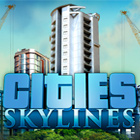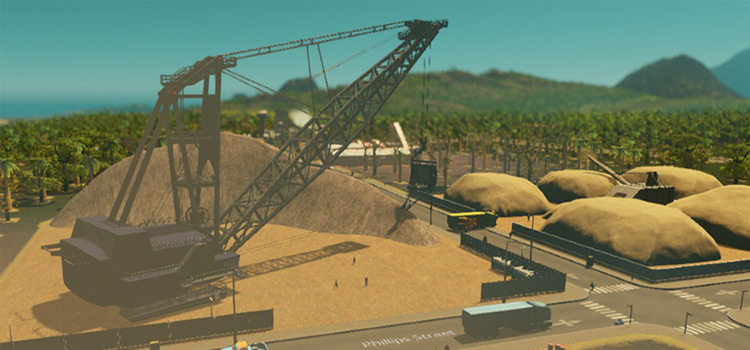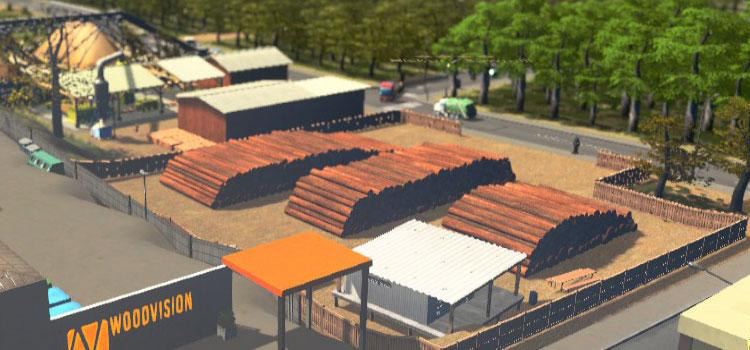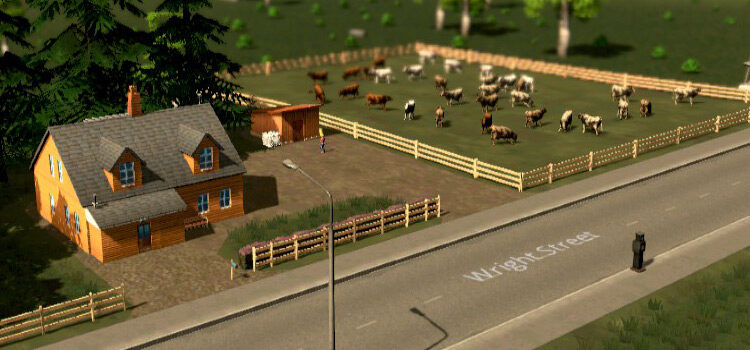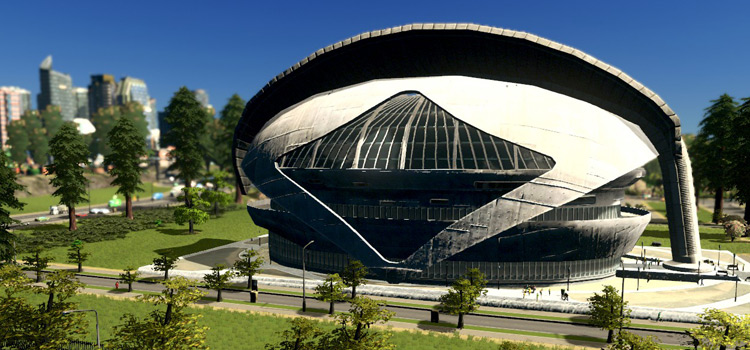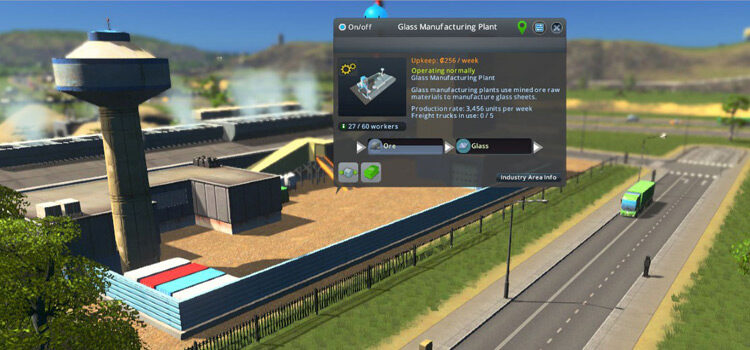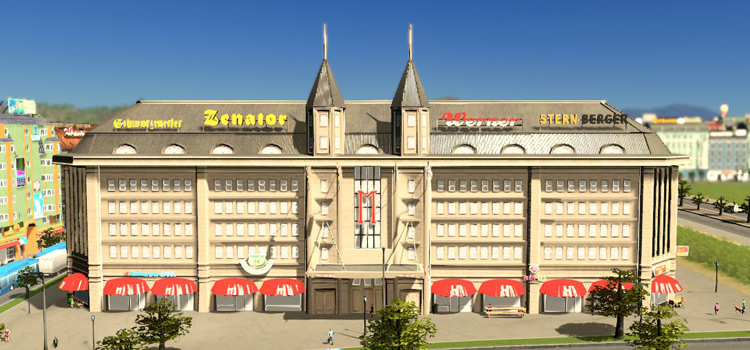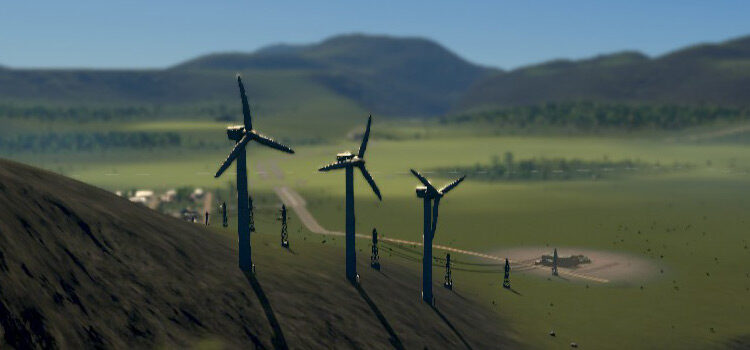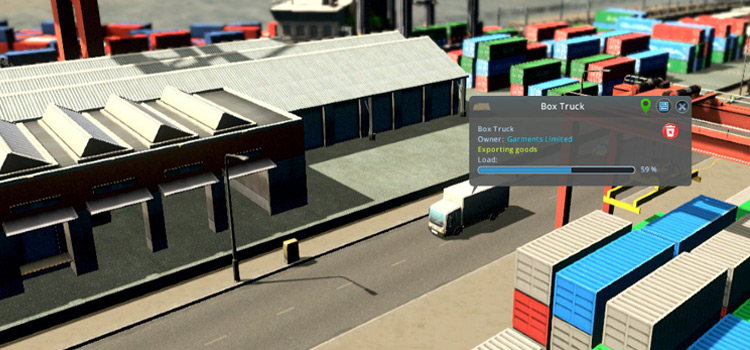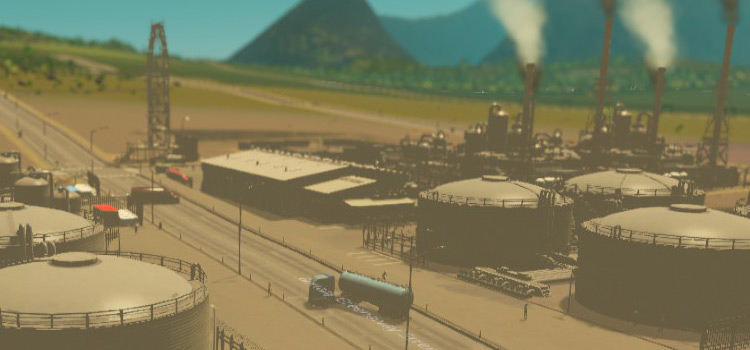
An oil industry area can be quite profitable in Cities: Skylines – especially as it levels up. So let’s get yours up and running!
Step 1: Preparing to Build Your Oil Industry
Of the four industry specializations in Cities: Skylines Industries (farming, forestry, ore, and oil), oil is unlocked last.
You’ll need to have reached the Busy Town milestone to unlock it.
To do that, you’ll want to start off by making sure you have enough money to spare, as oil industry buildings are considerably more expensive than their farming, forestry, and ore counterparts.
You’ll need ₡70,500 in total to build all of the oil industry buildings available to you at level 1.
| Building | Price |
|---|---|
| Main building | ₡30,000 |
| Small oil pump | ₡8,000 |
| Oil sludge pyrolysis plant | ₡25,000 |
| Small crude oil tank farm | ₡7,500 |
You’ll also need to take into account the costs of building roads, water pipes, and power lines to serve that area.
By default, oil (as well as ore) is a non-renewable resource in the game.
The natural oil resources present in your map will be depleted eventually by your industry area. However, you do have the option to make it unlimited by turning on the ‘Unlimited Oil and Ore’ mod that comes built into the base game.
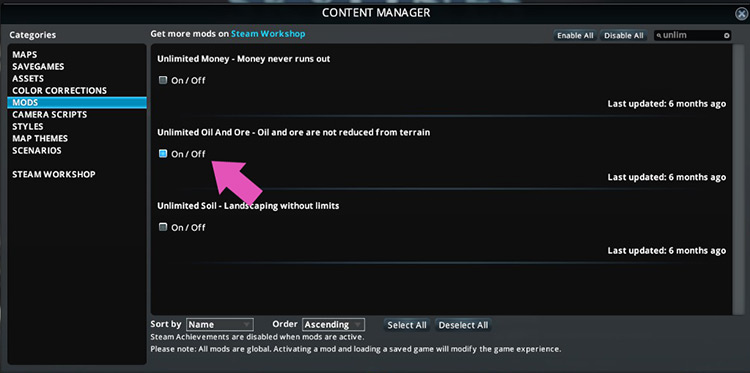
Step 2: Creating Your Oil Industry Zone
First, you’ll need to determine where oil natural resources are on the map.
You can check this by clicking on Natural Resources on the info views panel.
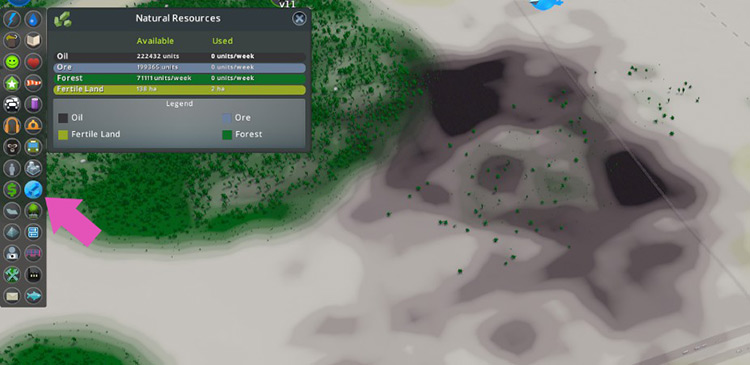
Oil appears as a dark gray to black tint on the map; the darker it is, the more plentiful the resource in that spot.
Note: the oil industry buildings generate ground pollution (as well as noise), so it’s best to keep this industry area a good distance away from your residential zones.
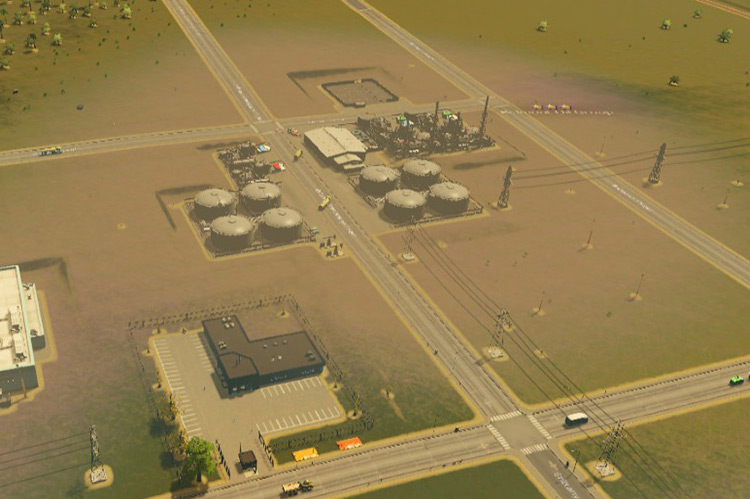
Once you’ve chosen your location, select the Paint Industry Area brush and paint over the area with the natural resource.
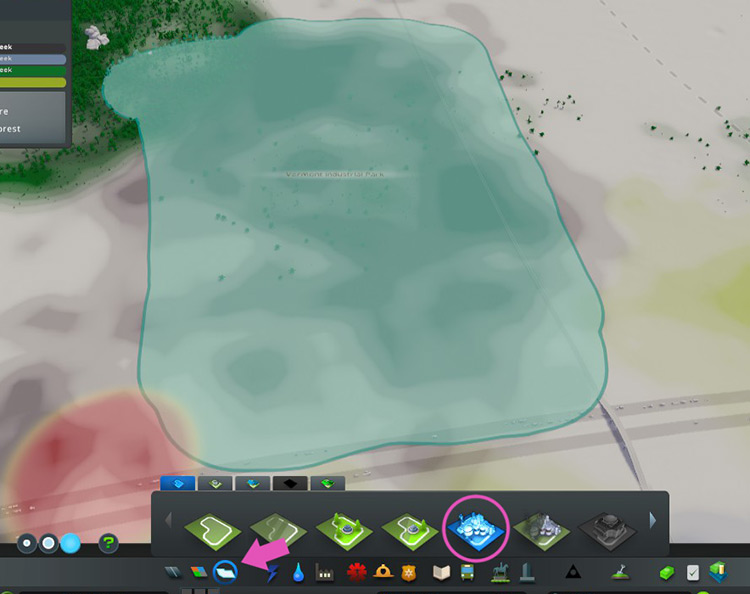
If there isn’t one yet, build a road into this area to connect it to your existing road networks.
Next, it’s time to build your Oil Industry Main Building.
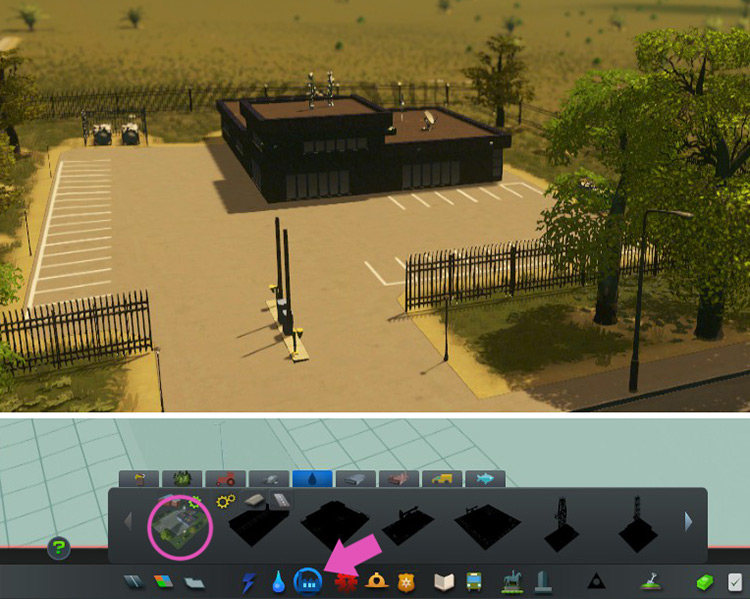
Avoid placing this on the most oil-rich terrain as it doesn’t need it; save those for your extractor buildings (oil pumps) instead.
The main building automatically assigns the oil industry specialization to your newly-created area.
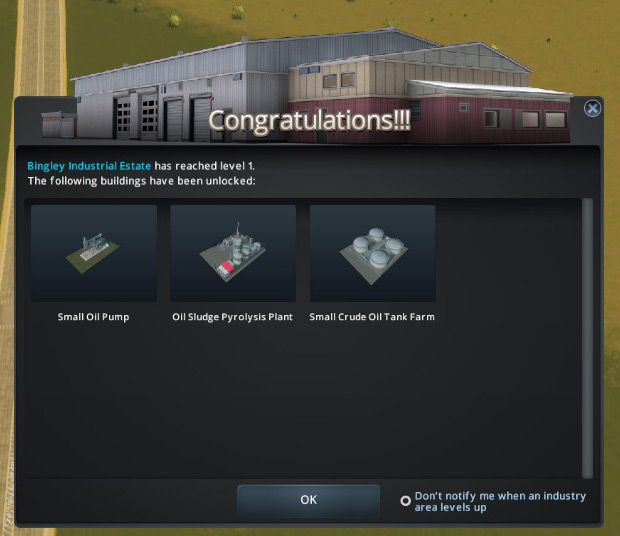
Step 3: Extracting & Storing Oil
With your new industry area set up, it’s time to start extracting oil, which is the raw resource produced by the oil industry.
To produce it locally from your natural oil resources, you’ll need an extractor building. At level 1, the only extractor building available to you is the small oil pump.
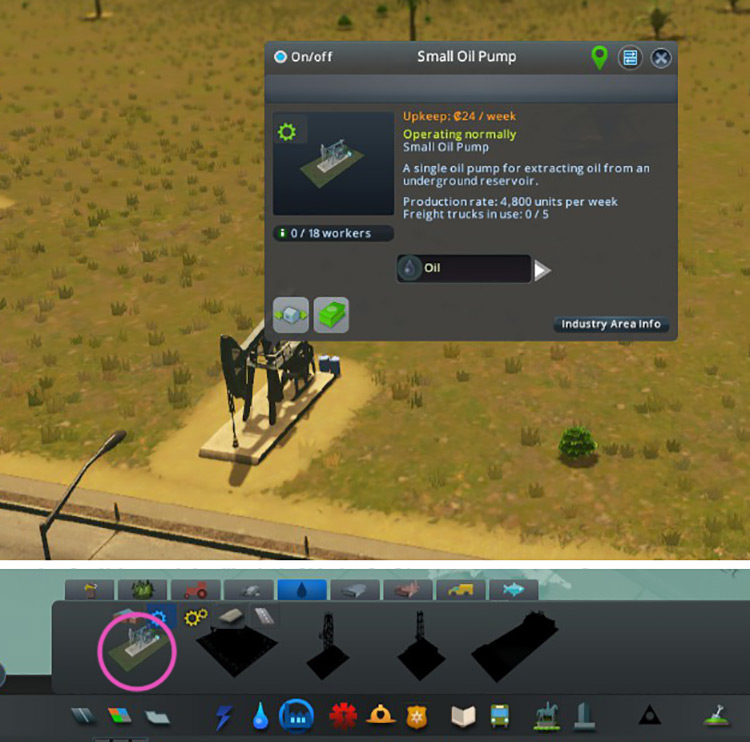
Build one on top of terrain where oil is present.
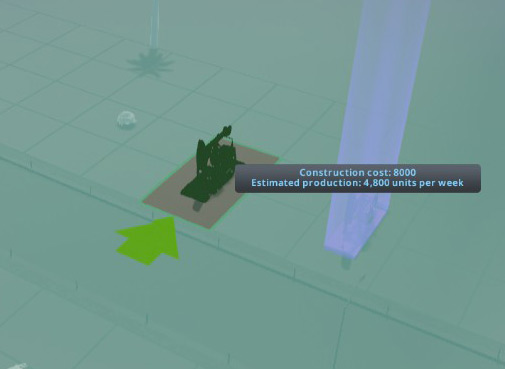
You’ll soon start to see it produce oil, and some of its trucks may start exporting as well.
As your industry area levels up, you’ll unlock more productive oil extractor buildings:
| Extractor Building | Level Unlocked | Build Cost (₡)Build Cost (₡) | Production Rate (units of oil/week) |
|---|---|---|---|
| Small Oil Pump | 1 | 8,00 | 4,800 |
| Small Oil Drilling Rig | 2 | 12,000 | 6,400 |
| Large oil pump | 3 | 16,000 | 8,000 |
| Large oil drilling rig | 4 | 20,000 | 9,600 |
| Offshore oil drilling platform | 4 | 45,000 | 11,200 |
With your pumps now producing oil, it’s a good idea to now build an oil storage facility so you can have a supply of it ready for manufacturing petroleum and plastics. (Your oil pumps have a limited storage capacity and will automatically try to export, or send to a local storage building, any oil it can’t hold.)
At level 1, you only have access to the small crude oil tank farm.
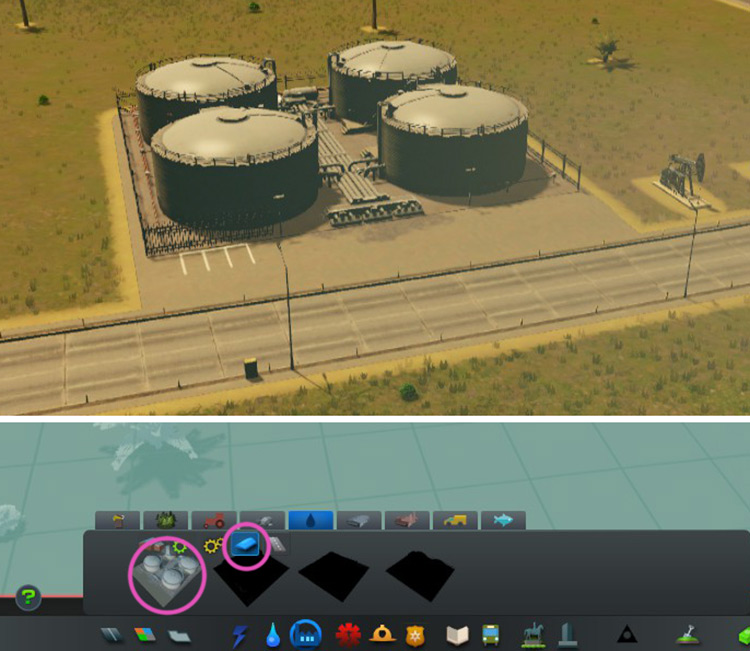
Each storage building has its own fleet of trucks that will deliver the oil resource to your processing buildings. Oil storage facilities with larger capacities and more trucks will be unlocked as your area levels up.
| Oil Storage Building | Level Unlocked | Build Cost (₡) | Capacity (Units of oil) | Trucks |
|---|---|---|---|---|
| Small crude oil tank farm | 1 | ₡7,500 | 300,000 | 12 |
| Crude oil storage cavern | 2 | ₡12,000 | 400,000 | 15 |
| Oil industry storage | 3 | ₡20,000 | 500,000 | 20 |
| Large crude oil tank farm | 5 | ₡30,000 | 600,000 | 25 |
Optional: Importing Oil
There are some maps (including Grand River from the base game and Woodgarden from the Industries expansion) that don’t have oil available.
If your chosen map doesn’t have natural oil resources (or if you just don’t want oil rigs in your city), you can import oil instead.
Your petroleum and plastics manufacturing buildings as well as your oil storage facilities will automatically import oil if it can’t source it within your city. This will of course, be less profitable than if you produced everything locally.
If you do choose to import oil, it would be best to make sure your oil industry area has easy access to a highway or cargo train station, to enable import trucks to reach it faster.
Step 4: Producing Petroleum
Level 1 also allows you to start producing the first processed material (also called special goods) from the oil industry, which is petroleum.
To produce petroleum, you’ll need an oil sludge pyrolysis plant.
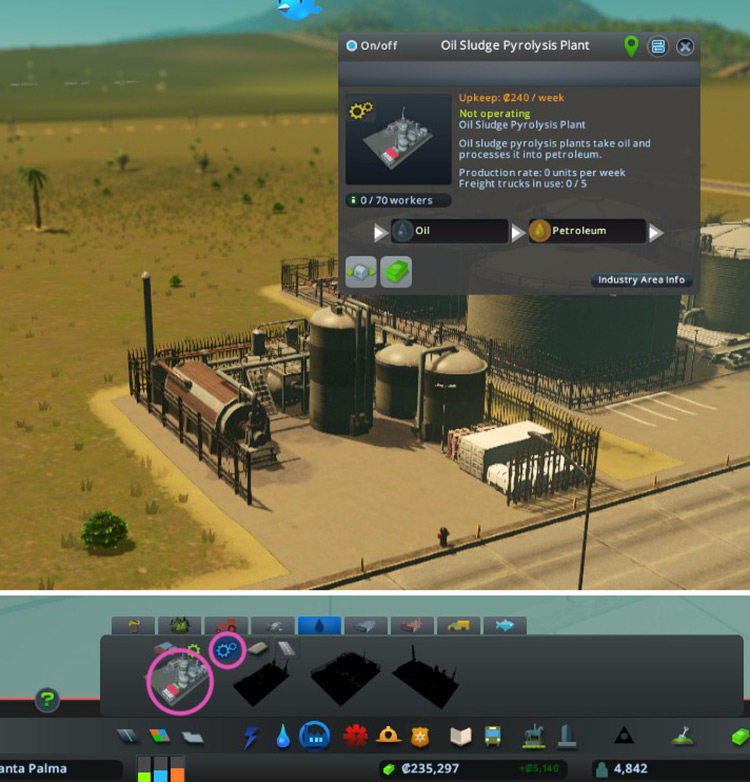
This also does not require oil-rich terrain, so simply place it in your industry area not too far away from your oil pumps and crude oil tank farms.
The more productive version of this building, the waste oil refining plant, is unlocked at Level 4.
| Petroleum production building | Level unlocked | Build cost | Production (units of petroleum/week) |
|---|---|---|---|
| Oil sludge pyrolysis plant | 1 | ₡25,000 | 4,000 |
| Waste oil refining plant | 4 | ₡35,000 | 8,000 |
Step 5: Leveling Up to Unlock Buildings
To unlock more advanced buildings (including the ones you need to produce plastic), you’ll need to level up your oil industry area.
This involves hitting milestones in terms of resources produced and workers employed (each building within your oil industry area hires a certain number of workers).
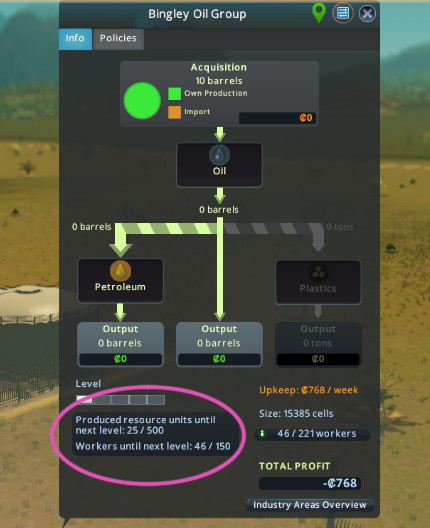
To reach the resource production milestones, you basically only need to have your extractor and processing buildings running, and they’ll hit the required units eventually.
All resources produced within the oil industry (oil, petroleum, and plastics) count towards this.
On the other hand, hiring the required amount of workers will often mean building several instances of a building—for instance, several oil pumps and crude oil tank farms in order to hit level 2.
You’ll also need to make sure you have a large enough population, and enough educated workers, to keep your industry area staffed.
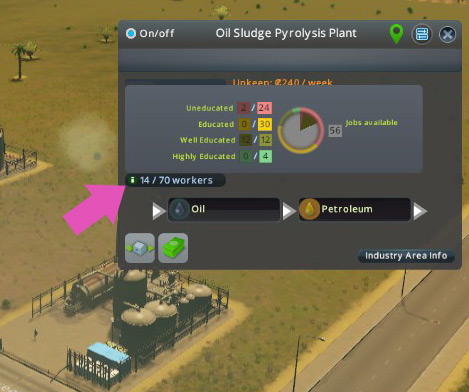
Leveling up your industry area also grants you productivity and pollution reduction bonuses.
Step 6: Producing Plastics
Once you’ve reached level 2, you can start producing plastics – which are the other processed material produced by the oil industry area.
Your first plastic manufacturing facility is the petrochemical plant. Build one in your industry area.
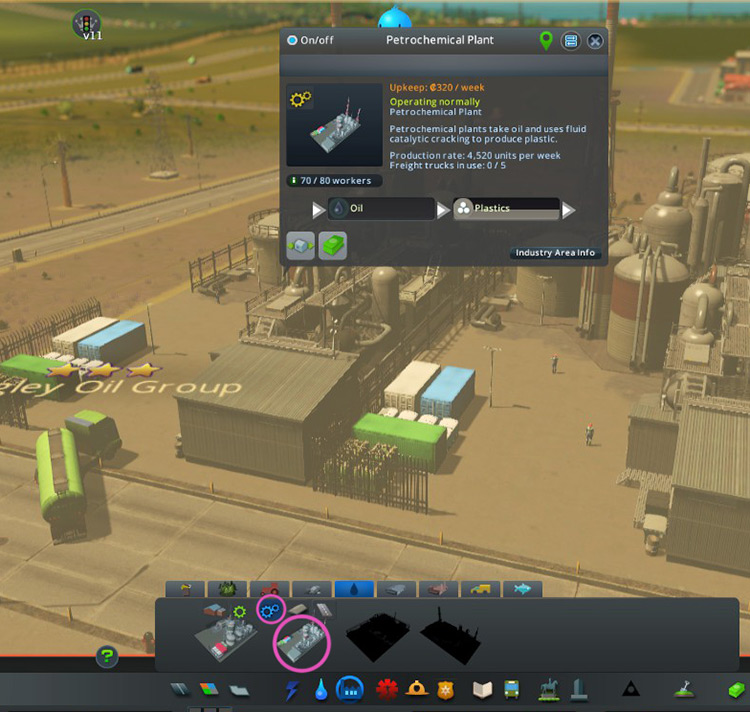
Ideally by this time your oil storage facilities will have plenty of oil, and should start delivering oil to your petrochemical plant to turn into plastics.
The more productive version of this buildings, the Naphtha Cracker Plant, is unlocked at level 5.
| Plastic production building | Level unlocked | Build cost (₡) | Production (units of metal/week) |
|---|---|---|---|
| Petrochemical plant | 2 | ₡30,000 | 4,000 |
| Naphtha cracker plant | 5 | ₡40,000 | 8,000 |
Auxiliary Buildings
There are two types of auxiliary buildings that you can place to make your industry area more efficient.
- The oil industry workers’ barracks gives your oil industry area a 5% productivity boost
- While the oil industry maintenance building increases the oil storage capacity in your buildings by 5%.
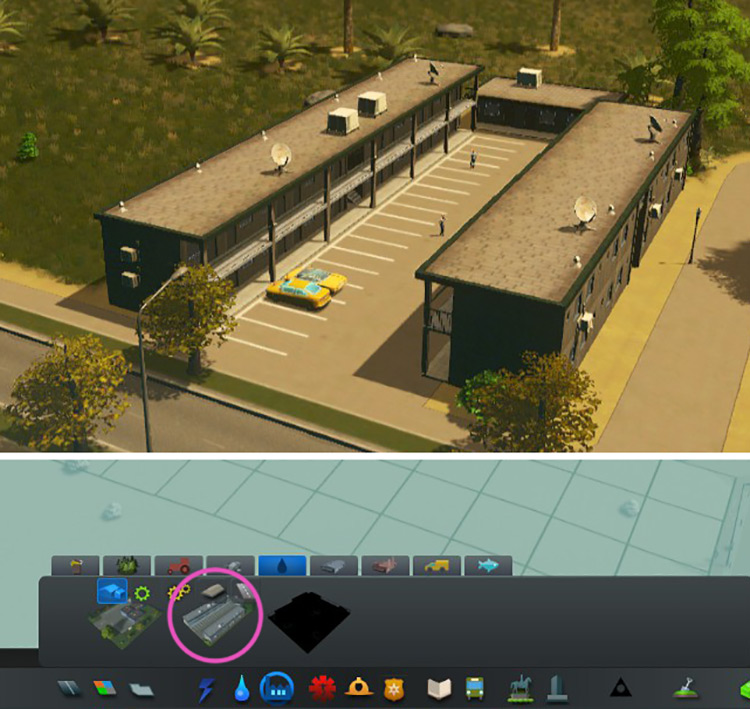
You can place several of each to stack the bonuses (although the bonus from barracks is capped at 100%, i.e. 20 barracks).
Each auxiliary building also hires workers, so you can use these towards your worker level milestones.
| Building type | Level unlocked | Building cost (₡) | Effect on Oil Area |
|---|---|---|---|
| Oil industry workers’ barracks | 2 | 15,000 | +5% production rate per barracks, up to a max of 100% |
| Oil industry maintenance building | 4 | 35,000 | +5% storage capacity per maintenance building |
Oil Industry Area Products in Unique Factories
All of the materials produced by your oil industry area—oil, petroleum, and plastic—can be directly exported for profit. However, it can be more profitable to use your processed materials, petroleum and plastic, in unique factories instead.
Unique factories are buildings that use processed materials (often from more than one industry area type) into luxury goods. These are either exported, or sold in local commercial zones.
These are the unique factories that make use of petroleum and plastics, as well as the other industry area types and special goods that are required:
- Household plastic factory: petroleum and plastic
- Petroleum refinery: petroleum, plastic, metal (ore industry)
- Soft paper factory: petroleum, plastic, crops (farming industry), paper (forestry industry)
- Sneaker factory: petroleum, plastic, paper, planed timber (forestry industry)
- Toy factory: plastic, planed timber, paper
- Printing press: plastic, paper
- Electronics factory: plastic, metal, glass (ore industry)
- Clothing factory: plastic, crops, animal products (farming industry)
- Car factory: plastic, animal products, metal, glass
- Food factory: plastic, paper, animal products, flour (farming factory)
- Modular house factory: plastic, planed timber, metal, glass
- Shipyard: plastic, planed timber, metal, glass
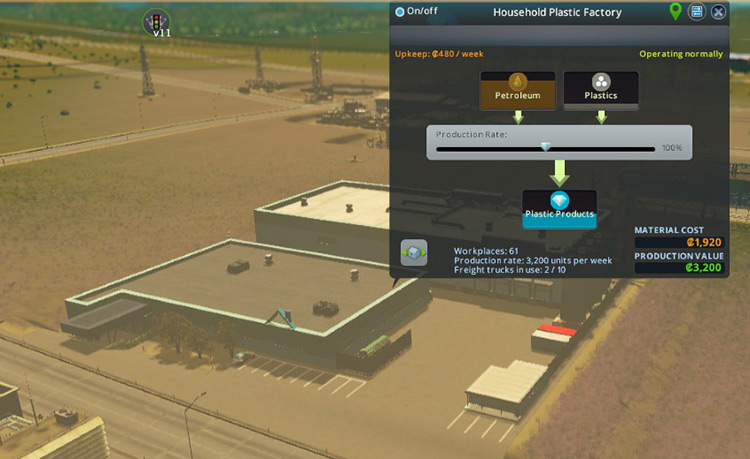
-
Cities: Skylines
- A Guide To Your First Oil Industry in Cities: Skylines

